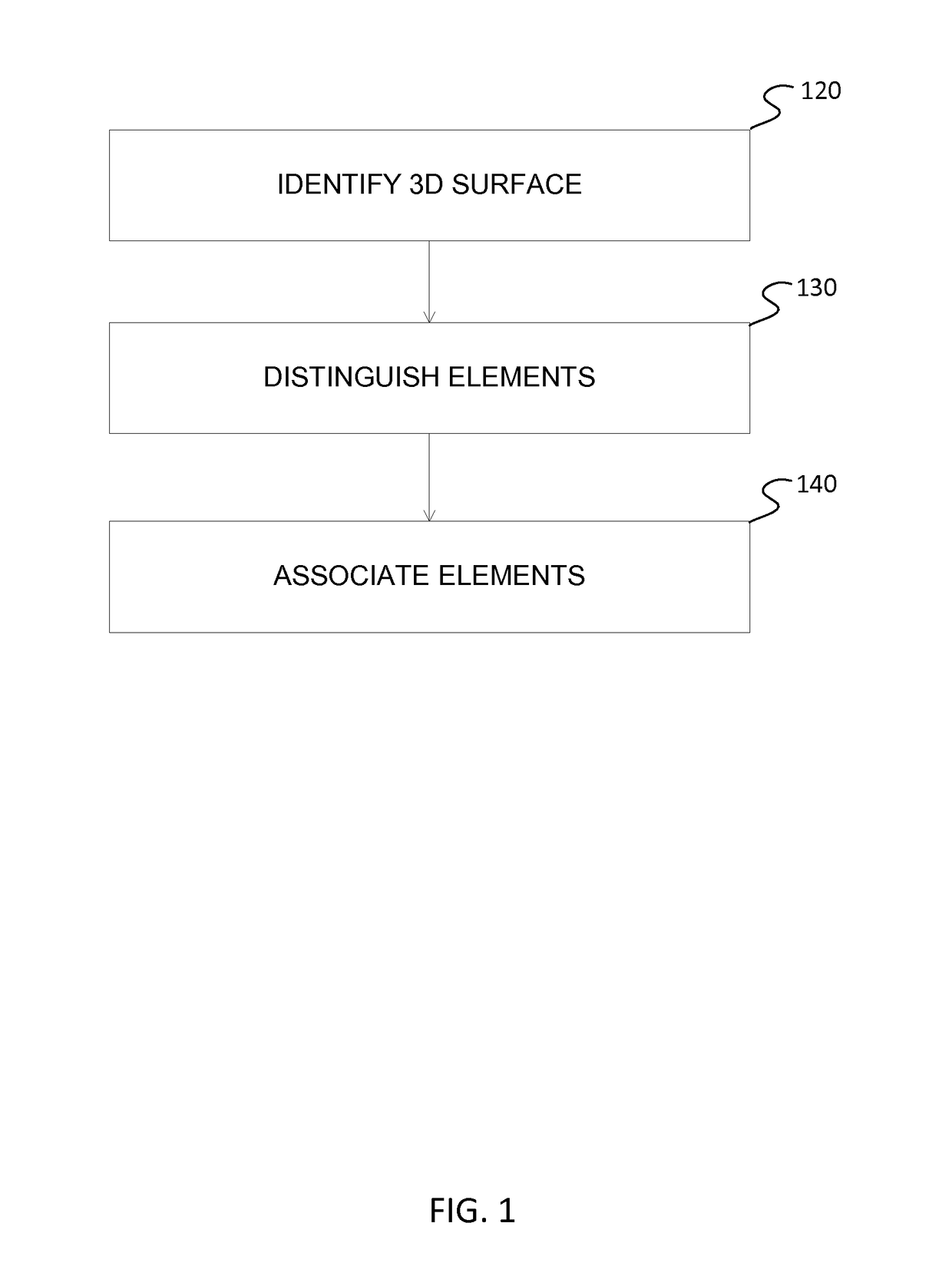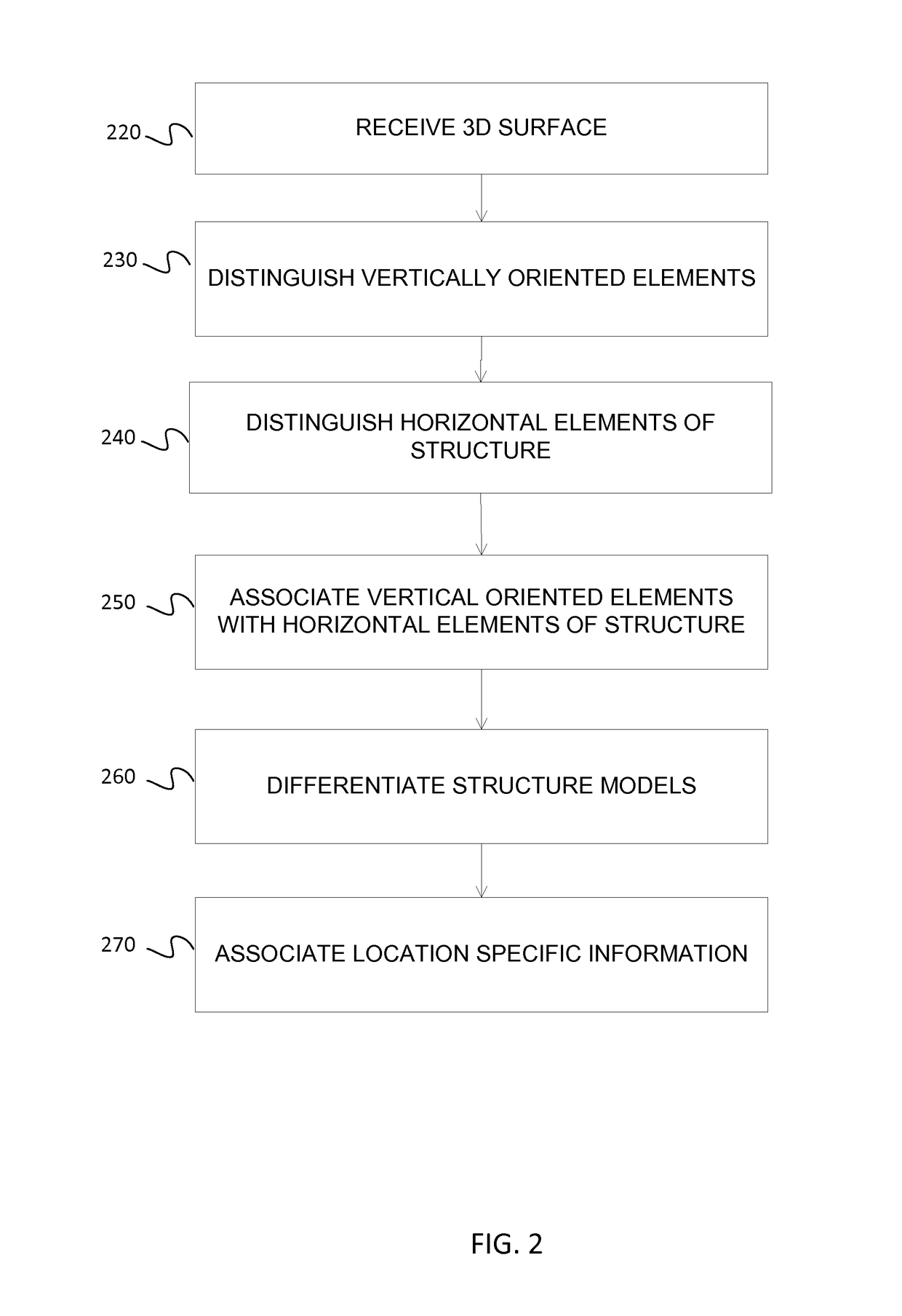Structure model segmentation from a three dimensional surface
a structure model and three-dimensional surface technology, applied in the field of structure model segmentation, can solve the problems of reducing the resources required to create collections of 3d models required to accurately describe geographic areas, reducing the labor intensity of manually creating 3d models for each structure in a metropolitan geographic area, and illustrations are merely representational
- Summary
- Abstract
- Description
- Claims
- Application Information
AI Technical Summary
Benefits of technology
Problems solved by technology
Method used
Image
Examples
Embodiment Construction
[0011]Data acquisition techniques, such as photogrammetry methods or Light Detection and Ranging (LIDAR), may be used to develop a three dimensional (3D) surface model representing an entire geographic area, however, the data may involve one continuous surface that does not delineate the structures, such as a building, wall, or other manmade or natural artifact, that exist in the geographic area from the rest of the 3D surface. Structures may be delineated from the rest of a 3D surface representing a geographic area using various techniques. In an embodiment, characteristics of the individual surface elements may be used to group and distinguish surface elements that represent structures from surface elements that represent non-structural portions of the geographic area. Once the surface elements representing the structure are identified, these surface elements may be grouped or otherwise associated to form a segmented independent model from the 3D surface. The grouped surface eleme...
PUM
| Property | Measurement | Unit |
|---|---|---|
| angle | aaaaa | aaaaa |
| structure | aaaaa | aaaaa |
| angle | aaaaa | aaaaa |
Abstract
Description
Claims
Application Information
 Login to View More
Login to View More - R&D
- Intellectual Property
- Life Sciences
- Materials
- Tech Scout
- Unparalleled Data Quality
- Higher Quality Content
- 60% Fewer Hallucinations
Browse by: Latest US Patents, China's latest patents, Technical Efficacy Thesaurus, Application Domain, Technology Topic, Popular Technical Reports.
© 2025 PatSnap. All rights reserved.Legal|Privacy policy|Modern Slavery Act Transparency Statement|Sitemap|About US| Contact US: help@patsnap.com



